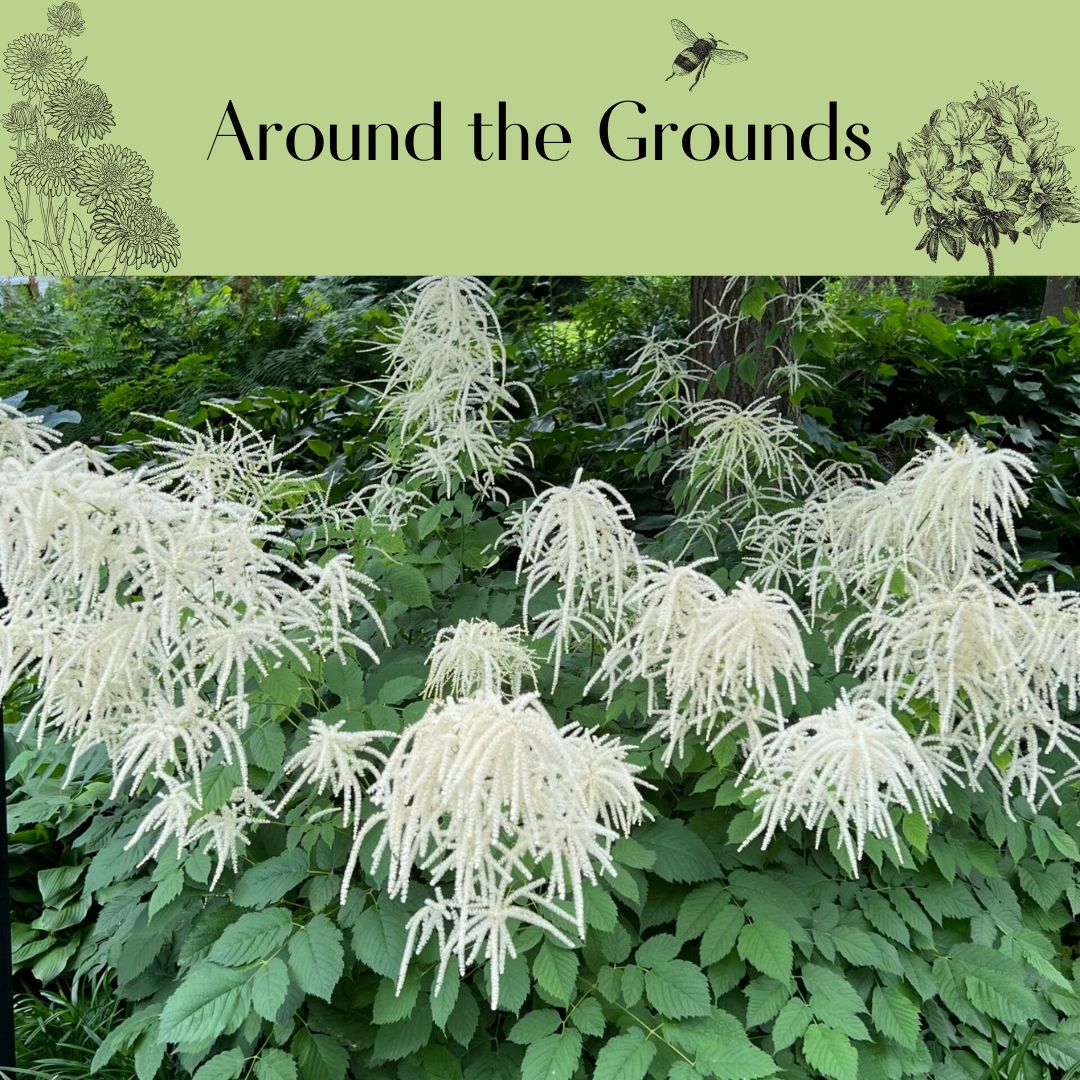“Goat’s Beard” is the common name of Aruncus dioicus, a gorgeous native plant that is perfect for shade gardens. It is spectacular toward the back of a mixed border, along a fence, or at the edge of a woods. Blooming from late spring through mid-summer, Aruncus (pronounced “ah-runk-us”) grows 4 to 6 feet tall with very large, fluffy white flowers. Many different pollinators are attracted to its flowers, which makes Aruncus especially valuable in shade where great pollinator plants are more difficult to find.
Sometimes confused with Asian astilbe, Aruncus blooms only in white, is much taller, and has bigger flowers. Common names can add to the confusion – we have seen Asian astilbe sold in nurseries as “false Goat’s Beard,” and we’ve seen Aruncus labelled as “false astilbe” or “false spirea,” so it’s always important to check the Latin or scientific name on plant labels.
And, as is often the case, the scientific name is very interesting! Aruncus dioicus refers to the fact that Aruncus is “dioecious,” meaning the plants are either male or female. The word “dioicus” in its name comes from Greek meaning “two households.” While dioecious plants are fairly common among trees and shrubs, they are rather unusual in garden perennials.
The flowers on male Aruncus plants have many pollen-bearing stamens, while the flowers on the female plants have only 3 pistils and, of course, no pollen. Bees are drawn to both types of flowers by nectar, and transfer pollen from the male to the female flowers.
The male flowers are somewhat showier because the stamens give them a fluffy appearance, but the plants are not typically labelled separately for sale. You’ll have to look closely to see whether your Goat’s Beard is a Billy goat or a Nanny goat! Both make excellent garden plants, and look fabulous massed in the shade.
Aruncus is native to the US from Pennsylvania to North Carolina and west from Indiana to Arkansas. Although it is not native to New York, it does very well in northern gardens and is hardy through Zone 4 in rich, moist soil, and part sun to full shade. It is not generally attractive to deer or rabbits, and it is the larval host plant for the Dusky Azure butterfly.
As pollinators face increasing stress, providing native plant sources of nectar and pollen is more critical than ever. Goat’s Beard does that while adding light and beauty to your shade garden.

